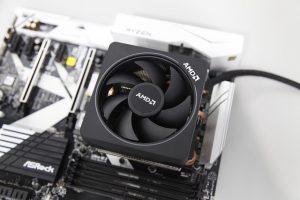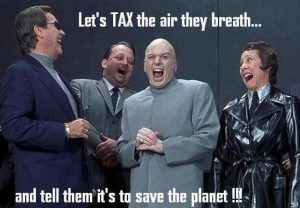
Nations with a faster money velocity often signal a more advanced stage of growth. The money velocity tends to oscillate in sync with economic cycles. In times of economic prosperity, there’s a higher propensity for consumers and businesses to spend, thus accelerating the money’s velocity. Conversely, during economic downturns, spending habits become more conservative, leading to a deceleration in the money velocity.
The money velocity equation has a direct relationship with crucial economic indicators. It’s common to see the money velocity equation increase in tandem with GDP and inflation. However, in a shrinking economy, when GDP and inflation indicators drop, the money velocity equation is also likely to decrease.
Here’s what the Federal Reserve has to say about the money velocity equation:
MV = PQ
In this equation:
M signifies money.
V denotes the money velocity equation (or the frequency at which money is spent).
P is the overall price level.
Q is the quantity of goods and services produced.
The money velocity equation suggests that if the money supply (M) expands at a rate faster than the actual economic output (Q), assuming a constant velocity, the price level (P) is likely to rise to balance this disparity. This theory led to the prediction that U.S. inflation would hover around 31% annually between 2008 and 2013. During this time, the money supply grew at an average rate of 33% per year, while output saw an average growth rate just under 2%. However, contrary to these predictions, inflation remained consistently low, under 2%.
Factors Leading to Persistent Low Inflation
1. Variations in the Money Velocity Equation: The assumption of a constant money velocity may not always hold true in practical scenarios. Changes in consumer and business behaviour, such as increased savings or decreased spending, can affect the money velocity equation and disrupt the expected relationship between money supply, output, and inflation.
2. Economic Conditions and Confidence: The period from 2008 to 2013 was characterized by significant economic hurdles, notably the global financial crisis. Uncertainty and diminished confidence in the economy can lead to reduced spending and investment, which impacts the transmission of money supply growth to inflation.
3. Actions by Central Banks: Central banks, like the Federal Reserve, play a pivotal role in managing monetary policy and controlling inflation. Central banks can influence the money supply and its effect on inflation by adjusting interest rates and implementing quantitative easing.
4. Other Factors Influencing Inflation: Inflation is influenced by many factors beyond just money supply growth and output, including labour market conditions, productivity, global trade dynamics, and government policies. These factors can interact and offset the direct impact of money supply growth on inflation.
Therefore, the persistence of low inflation during the 2008-2013 period can be attributed to the complex interplay of these factors, challenging the straightforward relationship predicted by the money velocity equation.
Money Velocity Equation: Decline
Now that we’ve discussed the money velocity equation let’s examine what happens when VM begins to decline.
The challenge lies in the dynamic nature of the money velocity equation, as shown in the provided figure. Historically, the money velocity equation has never remained constant, as it can fluctuate significantly. During periods of expansionary monetary policies, if there is a rapid decline in the money velocity equation, it can offset the increase in the money supply and potentially result in deflation rather than inflation.
The money velocity equation is calculated by dividing the nominal gross domestic product (GDP) by the money supply (V = PQ/M). This calculation helps assess the economy’s strength and people’s spending propensity. When a higher volume of transactions occurs within the economy, the money velocity equation increases, indicating economic expansion. Conversely, when there is a decrease in transactional activity, the money velocity equation declines, signalling a potential economic contraction.
The Money Velocity Equation: A Worrying Decline and AI Disruption
The observed trend in the money velocity equation raises concerns about the authenticity of the economic recovery from its inception. If we examine the money velocity equation, it appears to have experienced a significant decline, reaching new lows before stabilizing. This begs the question: What could be the underlying cause? One plausible explanation could be that the market is already factoring in the disruptive potential of artificial intelligence (AI). The advent of AI threatens established business practices and numerous industries that have been slow to adapt, including large banks, law firms, many mega-corporations, and even governmental institutions, which are considered the most significant contributors to this issue.
The Emergence of AI and Robots: A New World Order for the Workforce
Option 2: It could be signalling that this so-called economic boom will go up in smoke without a very accommodative Fed. As we hinted, Forever Q.E. is here to stay forever or until a new monetary system is launched. Still, A.I. will be in charge when that happens, and there will be a whole new world order. This new world order will not be what the current NWO members expected or envisioned. However, that discussion is beyond the scope of this publication.
One thing is all but sure; the human workforce will be a lot different just 60 months from today. A.I. and Robots will replace a vast swath of the workforce. And this just came out from Tesla.
Tesla CEO Elon Musk said the company expects to build a humanoid robot with artificial intelligence next year to complete simple physical tasks most workers detest. Musk unveiled the “Tesla Bot” concept on Thursday during its “A.I. Day,” which the company streamed on its website. Musk said the bipedal gadget is meant to “navigate through a world built for humans.”
“Tesla is arguably the world’s biggest robotics company because our cars are like semi-sentient robots on wheels,” Musk said. “In the future, physical work will be a choice. If you want to do it, you can. But you won’t need to do it.”
When business owners can replace the many mediocre workers they are forced to hire, they will gleefully replace them with robots. And Tesla is not the only company attempting to build affordable robots.
Low Velocity of Monetary Base: Hindering Economic Growth
The velocity of the monetary base, which indicates how many times a dollar in the monetary base is spent within the economy, reached a historically low level of 4.4. This signifies that each dollar in the monetary base was utilized only 4.4 times over the past year, a significant decrease from the pre-recession figure of 17.2. This indicates that despite the substantial increase in the monetary base resulting from the Federal Reserve’s extensive asset purchase programs, there has not been a corresponding proportional rise in nominal GDP. The notable decline in velocity has counteracted the substantial growth in the money supply, resulting in minimal changes in nominal GDP, including both price levels (P) and real economic output (Q).
Other Articles of Interest

Unraveling Stock Market Cycles: Strategies for Long Term
Seeking Alpha Dividend Harvesting: Pioneering the Future of Intelligent Investing

AMD analysis and RSI Stock Indicator

Invest when there is blood in the streets

Value Investing Dead? – the Truth Behind a Timeless Strategy

Money Velocity Equation: Analyzing Economic Growth Predictors and the Impact of AI Disruption

“What is Permabear?”- the World of Perpetual Pessimism

Insights on AI: Unforeseen Changes Amidst Growing Enthusiasm

Child Hunger & the Worsening Global Hunger Crisis

Investing 101: A Guide to Short-Term Stock Market Investing

Stock market and Geopolitical news

Navigating the Markets like a Pro: Unlocking the Secrets of Stock Portfolio Management and Advancing as a Trader

Top US Scientist Resigns – States Global Warming A Big Hoax

Stock Market Crash 2020

